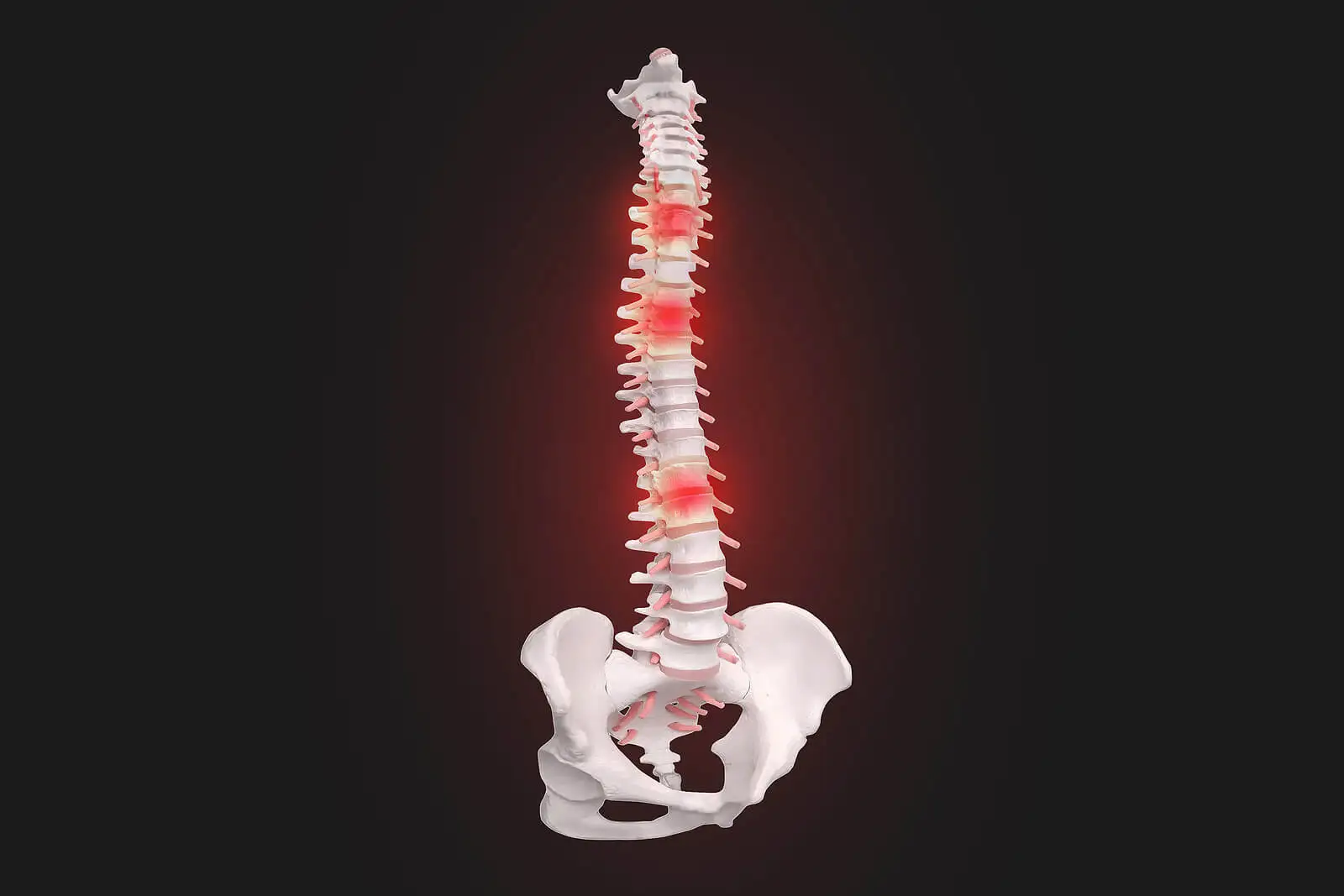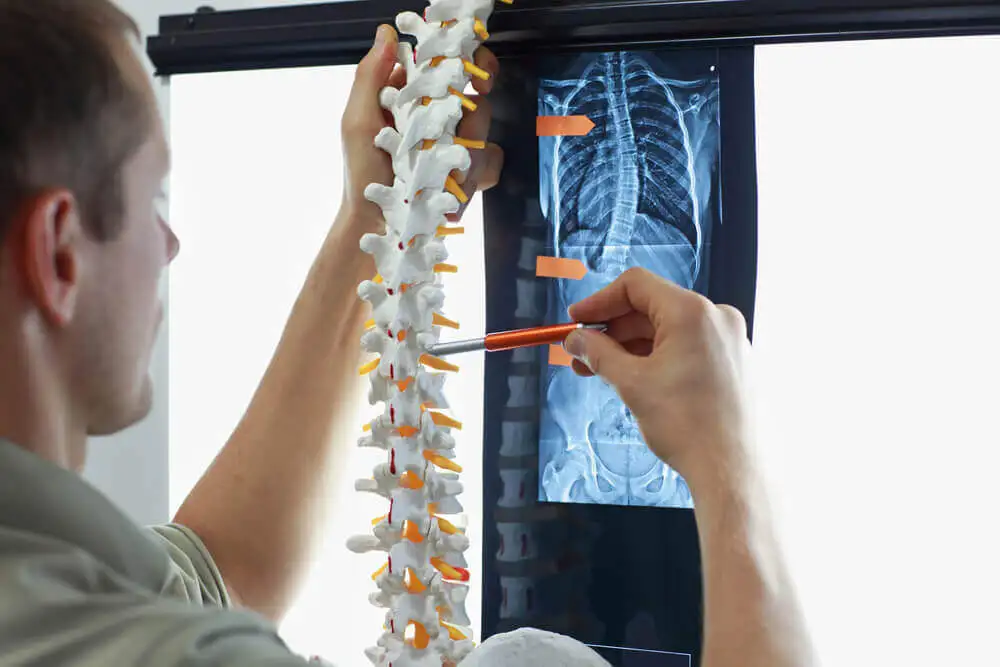Scoliotic Posture: What Is It?

Before undergoing treatment to correct our posture, we must be sure whether the deviation seen in the spine is scoliosis or a scoliotic posture. Although the two conditions may look similar, there are some differences.
The differences will be revealed with an x-ray. Therefore, it’s important to see a specialist to make the diagnosis and identify possible causes.
Regarding treatment, scoliotic posture can be improved with physical therapy, postural education, and physical exercise to strengthen the muscles, among other measures.
What is a scoliotic posture?
If we see any of our children, family members, or people close to us with poor posture, the word “scoliosis” immediately comes to mind. However, it could actually be a scoliotic posture that’s affecting them.
But what is this? Well, the answer is very simple: it’s a deviation of the spine due to external or external causes.
Although it’s similar in terminology to scoliosis, the key word here is posture. In this order of ideas, a scoliotic posture is produced voluntarily or, rather, by lack of good posture.
Regarding its incidence, it is estimated that it occurs in 2% of the world population, according to studies on the subject. It’s especially frequent in children and more so in adolescents.
However, it’s important to remember that the spine is subdivided into five zones:
- Cervical region
- Dorsal or thoracic region
- The lumbar region
- The sacral
- The coccygeal
This problem tends to occur in the first three zones, but it’s more common in the dorsal and then in the lumbar regions.

The causes and symptoms
A classification has been established according to the factors that can cause a scoliotic posture:
- Postural: As the name implies, this often arises as a result of poor posture, especially when sitting at the computer or telephone.
- Compensatory or antalgic: If there’s any pain, a bad posture can be adopted intentionally to avoid or alleviate it. It also happens when there are other imbalances in the body, and the person has one leg longer than the other, for example.
- Inflammatory: Some conditions, such as appendicitis, may force the person to adopt a bad posture.
- Psychological: Although not very frequent, there may be a psychological basis or cause.
As for other causes, some research points to a relationship between hyperlaxity and postural control. Similarly, the practice of certain sports can cause one side of the body to develop more (tennis) or force constant stooping (field hockey).
The symptoms are centered on back pain and muscular imbalance. Although no other signs are manifested in most cases, apart from the deviation, the posture becomes visible in deformities, humps, a higher shoulder or pelvic dysmetry.
We think you may also enjoy reading this article: 5 Recommendations to Improve Your Posture and Relieve Back Pain
The differences between scoliosis and a scoliotic posture
Although there are similarities between these two conditions, there are also notable differences between scoliosis and scoliotic posture. Therefore, their diagnosis and treatment are different.
The most notable difference between the two is that the deviation in scoliotic posture is in two dimensions, with respect to the horizontal and vertical axes. In scoliosis, on the other hand, it occurs in three.
In scoliosis, not only is there a deformity in the curve but the vertebrae are rotated in relation to the spinal axis. This is clearly visible in an X-ray.
In addition, the degree of displacement can also be measured. In fact, scoliosis is considered to be scoliosis when there’s more than 10º of deviation with respect to the line along which the spine should run.
In scoliosis, it’s possible to observe, on the sides of the spine, an area that is concave and another convex. This doesn’t occur in the scoliotic attitude.
Another particularity has to do with the difference between the sexes. According to the consensus of the Argentine Society of Pediatrics, 70% of people affected by scoliosis are women.
The causes also differ. Scoliosis can be of congenital origin or the product of diseases, both neuronal and muscular; it even be caused by trauma and infections.
Like this article? You may also like to read: How Yoga Changed the Posture and Life of an 87-Year-Old Woman
How do doctors diagnose these conditions?
To diagnose scoliosis, a complete examination of the patient is performed, in addition to a series of tests. This includes an X-ray of the spine.
There’s also a test known as the Adams test, which is performed as follows:
- The patient begins standing with their feet together.
- When attempting to bend to touch the feet, if a lateral hump appears, scoliosis may be suspected.
- If this doesn’t occur, a scoliotic posture may be present.
- Additionally, a level, a plumb line, or a scoliometer can be used to measure the angle of rotation.

Actions to correct scoliotic posture
Early diagnosis is important to start treatment as soon as possible and prevent the problem from becoming more complicated. With regard to correcting the scoliotic posture, there are different measures that can be taken.
This varies in each case, depending on the cause. Generally speaking, the following options are available:
- Postural re-education through methods such as Pilates. This is usually very beneficial. It’s often indicated if the problem has to do with bad posture when working or playing sports.
- Strengthening of the muscles of the torso in areas such as the abdomen and spinal erectors, which extend from the lumbar to the cervical region.
- Development of the musculature on the deficient side as mentioned in cases that occur in sports like tennis.
- The use of insoles or orthopedic shoes in people in people who have one leg shorter than the other.
An optimistic prognosis
The prognosis for scoliotic attitude is usually good, especially if there are no underlying serious disorders. In general, this problem doesn’t have the same impact and repercussions as scoliosis.
In fact, surgery is never required to treat it.
In some cases, with the development of the musculature and the passage of time, it may correct itself. And in others, it improves with recommended treatments. This requires good willpower and willingness on the part of the patient.
If we observe a bad posture when sitting or standing in our children, it’s never a bad idea to go to a specialist for an evaluation. That way, we can rule out scoliosis or any other spinal problem.
All cited sources were thoroughly reviewed by our team to ensure their quality, reliability, currency, and validity. The bibliography of this article was considered reliable and of academic or scientific accuracy.
- Álvarez García de Quesada, L. I., & Núñez Giralda, A. (2011). Escoliosis idiopática. Pediatría Atención Primaria, 13(49), 135-146.
- Barreras M. Escoliosis: concepto, etiología y clasificación. Ortho-tips. 2011; 7(2): 75-82.
- Bernard J, Valero J. Actitud escoliótica. EMC – Kinesiterapia – Medicina Física. 2002; 23(1): 1-7.
- Esparza Olcina M, García Aguado J, Martínez Rubio A, et al. Cribado de la escoliosis idiopática del adolescente. Pediatría Atención Primaria. 2015: 17(66): 159-179.
- Sanz García E. Efectos del método Pilates en la actitud escoliótica. Madrid: Universidad Pontificia Comillas, 2018.
- Quesada Á, Giralda A. Escoliosis idiopática. Pediatría Atención Primaria. 2011; 13(49): 135-146.
- Ruiz Contreras E. Test de Adams para el diagnóstico de la escoliosis idiopática en niños. Revisión sistemática de la literatura. Bogotá: Universidad El Bosque, 2017.
- Sociedad Argentina de Pediatría. Consenso de escoliosis idiopática del adolescente. Arch Argent Pediatr. 2016; 114(6): 585-594.
This text is provided for informational purposes only and does not replace consultation with a professional. If in doubt, consult your specialist.








